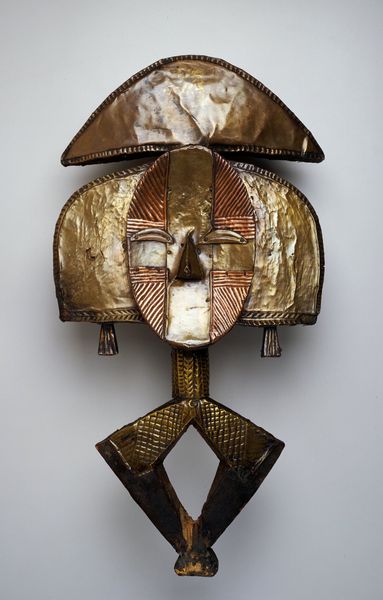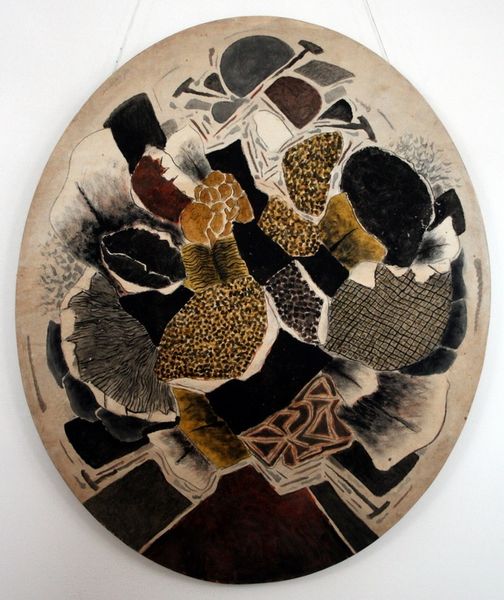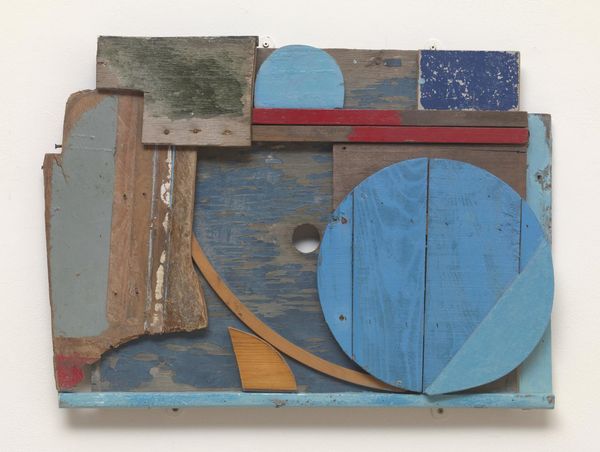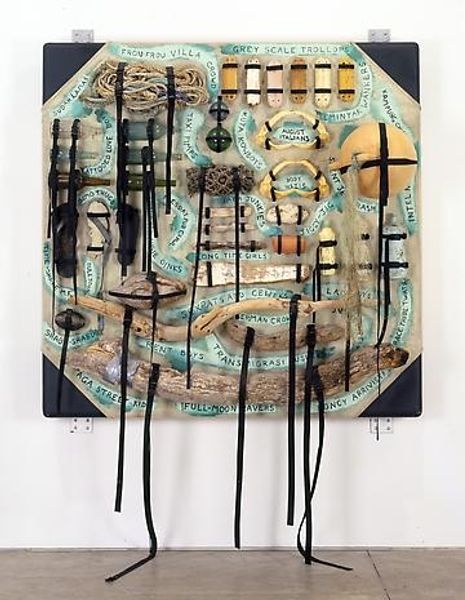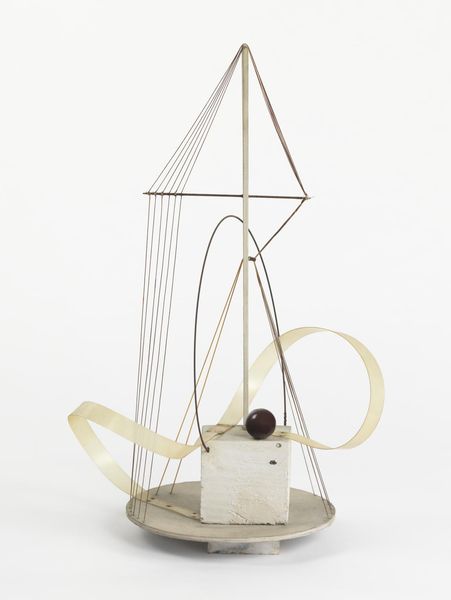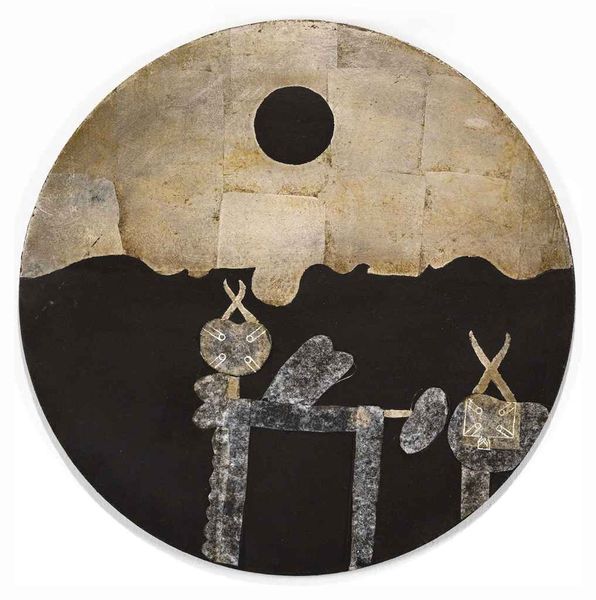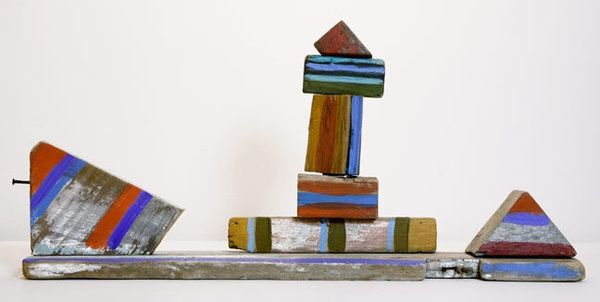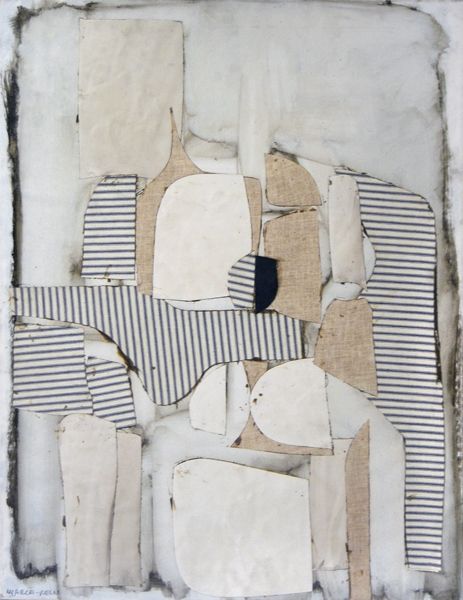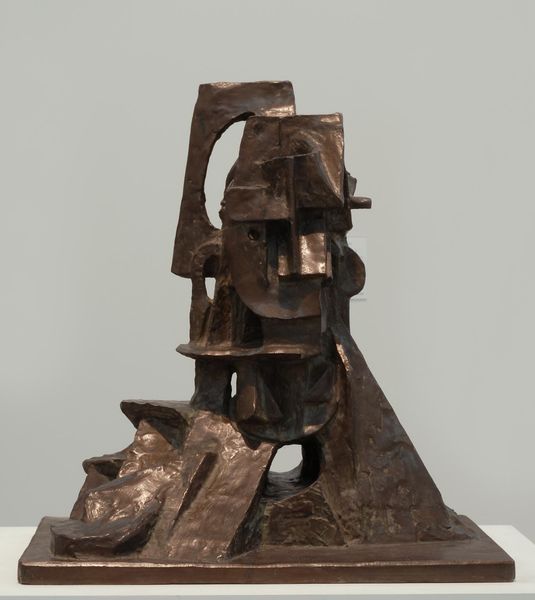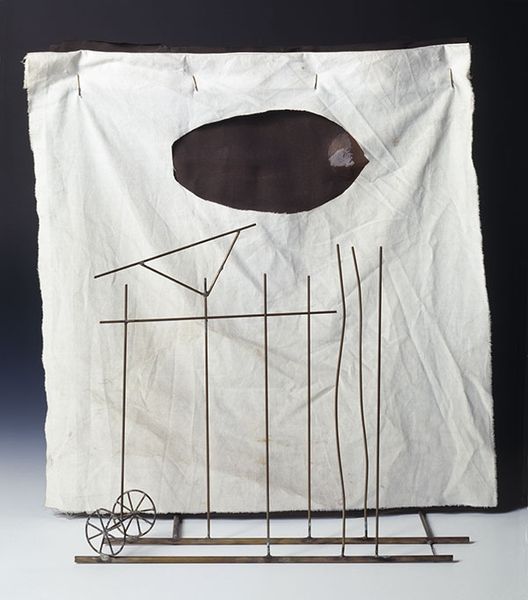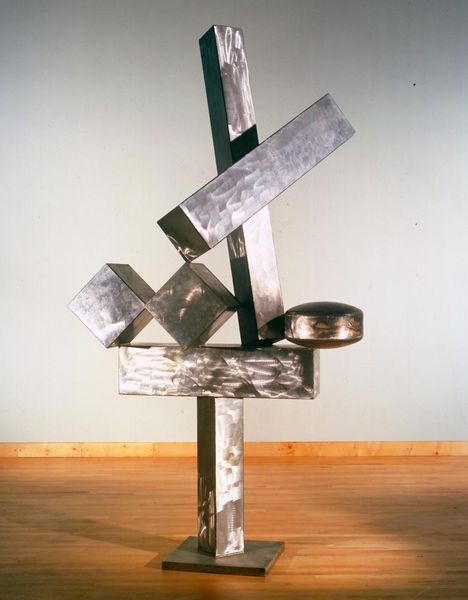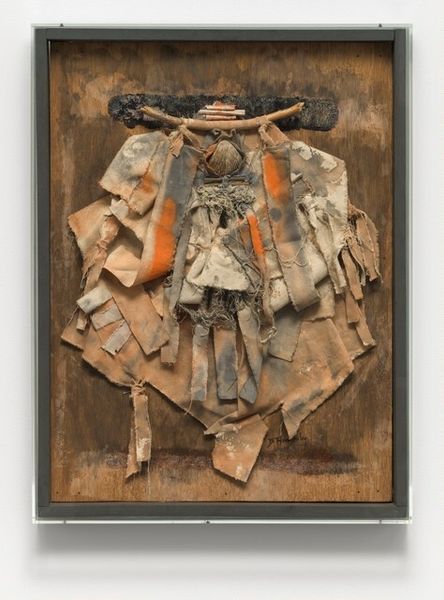
Dimensions: object: 2851 x 2520 x 144 mm
Copyright: © The estate of Michael Kenny | CC-BY-NC-ND 4.0 DEED, Photo: Tate
Curator: The thing that really strikes me is the scale—it’s almost a stage set, a backdrop to… I don't know, a slightly melancholic, deconstructed play about science. Editor: We're looking at "The Astronomer" by Michael Kenny, part of the Tate collection. It's an intriguing construction, a mix of painted wood, metal, and found objects. Kenny was interested in how science shapes our understanding of the world. Curator: The circle and triangle dominate—classic symbols. It almost feels alchemical, like an attempt to distill the universe into its basic forms, but with a definite human touch, you know, a bit messy, unfinished. Editor: Absolutely. This was produced during a time when institutions were trying to democratize scientific understanding. The art is a response to it. Curator: It is quite interesting how geometry is blended with very organic stains and drips of paint... Almost a reconciliation of order and chaos, don't you think? Editor: It's a testament to the artist’s ability to create an object of inquiry, isn't it? Something that invites more questions than it answers.
Comments
Join the conversation
Join millions of artists and users on Artera today and experience the ultimate creative platform.
tate 6 months ago
⋮
Michael Kenny began working on large, polychrome, wooden reliefs in the autumn of 1983, the year that his work was selected for The Sculpture Show, a major exhibition organized by the Arts Council at the Hayward and Serpentine Galleries in London. Having focused on science in his youth, he studied painting at Liverpool College of Art from 1959 to 1961 and then spent a further three years in London at the Slade (1961–4) where he began to make sculpture. As a sculptor he continued to incorporate painting and graphic elements into his complex constructions, and once described drawing as ‘the cornerstone of the visual arts ... the basic structure through which expression becomes possible’ (quoted in Davies, p.20). At the time he made The Astronomer he had just become Head of the Fine Art Department at Goldsmith’s College of Art in London, where he remained until 1988.
